
It is possible to find a staggering 12 different species of Hawk in the state of Nevada. These are:
- Northern Harrier
- Cooper’s Hawk
- Sharp-shinned Hawk
- Red-shouldered Hawk
- Swainson’s Hawk
- Ferruginous Hawk
- Rough-legged Hawk
- Northern Goshawk
- Broad-winged Hawk
- Harris’s Hawk
- Common Black Hawk
- Zone-tailed Hawk
Want to learn more? This book on the Birds of Prey of North America is a fantastic read!
Nevada is a West Coast state in the United States. This state is known for its variety of parks, historic sites, and recreation opportunities.
Its unique geographic location between Oregon, Idaho, California, Arizona, and Utah makes it a desirable area for locals, visitors, and animal life.
Interestingly, Nevada is the driest state in the United States with a majority of desert and semi-arid climate regions making for particularly hot summers and cold winters.
This climate and location provide a home to 23 state park units with an abundance of outdoor activities.
In Nevada, you will discover a variety of 12 hawk species! Northern Harriers are the most observed hawk, while you may have a bit of trouble spotting the Zone-tailed Hawk.
Below are intriguing profiles on each of Nevada’s hawk species.
Want to attract birds of prey to your yard? Take a look at our article!
What Hawks can be seen in Nevada?
Table of Contents
1. Sharp-Shinned Hawk
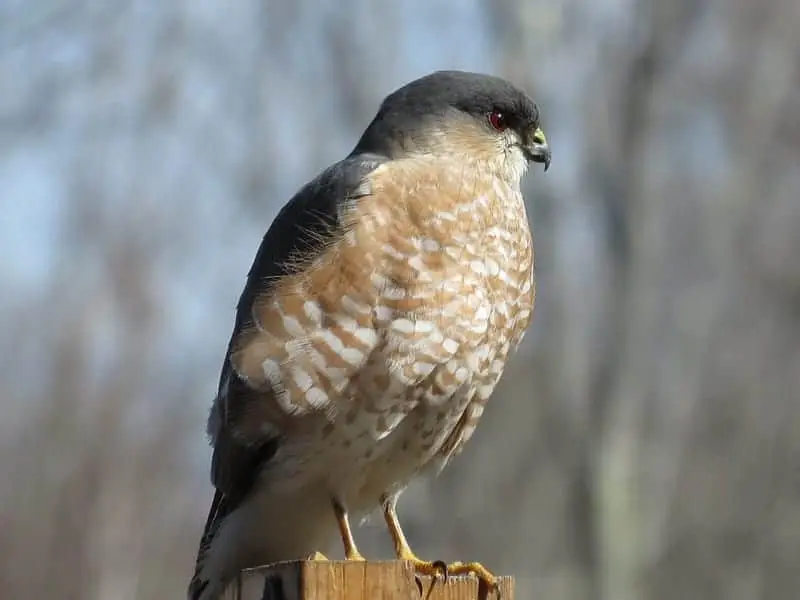
“Sharp-Shinned Hawk” by ‘Dennis Murhpy‘ is licensed under CC BY 2.0
Frank Lambert, XC274807. Accessible at www.xeno-canto.org/274807.
Wingspan
43-56cm
Weight
87-218g
Life Expectancy
3 years
Diet
Robins and Thrushes
Sharp-shinned Hawks are very small birds and it’s worth noting that the males are recognized as the smallest hawks throughout the United States.
The female Sharp-shinned Hawks are actually about one-third larger than males.
Sharp-shinned hawks have long legs in contrast to their short and round wings. The adult hawks are pale gray with rust-colored feathers on their underbellies.
As usual, the juveniles are mostly brown, but they are white beneath. Sharp-shinned Hawks are migratory birds in the Nevada region although some of them are year-round residents.
They prefer wooded areas with an abundant population of trees so they can ambush their prey.
On occasion, Sharp-shinned Hawks may be found visiting backyard feeders. You’ll most likely spot these hawks during breeding season from March to July as they start building their nests on breeding grounds.
Sharp-shinned hawks are known for their ‘ki-ki-ki’ sound as well as their high-pitched scream.
2. Cooper’s Hawk
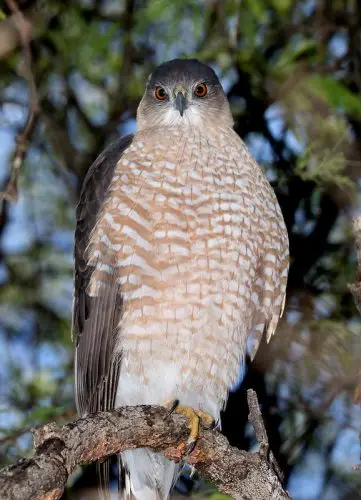
Sue Riffe, XC611811. Accessible at www.xeno-canto.org/611811.
Wingspan
62-90cm
Weight
330-680g
Life Expectancy
Up to 12 years
Diet
Small Birds, Mice & Squirrels
Cooper’s Hawks are medium birds, roughly the size of the average crow. Similar to other species of hawk, the females are larger than the males.
Cooper’s Hawks have large, round wings and long, thin tails. The adults are bluish-gray with orange colored feathers underneath.
Immature hawks on the other hand, have brown and streaky patterned feathers with pastel colored bellies.
Cooper’s Hawks are year-round residents of Nevada. In fact, these hawks are becoming more readily observed in both urban and suburban areas, as they make frequent visits to backyard feeders.
Actually, in some parts of Nevada, these hawks are more common in places with a high human population than they are in their own habitats.
Cooper’s Hawks typically prefer to hunt and nest in woodlands with open space. Their breeding season begins in May, when they are very territorial of their nesting sites. These hawks can be identified by their repetitive ‘cak-cak-cak’ calls.
3. Northern Goshawk
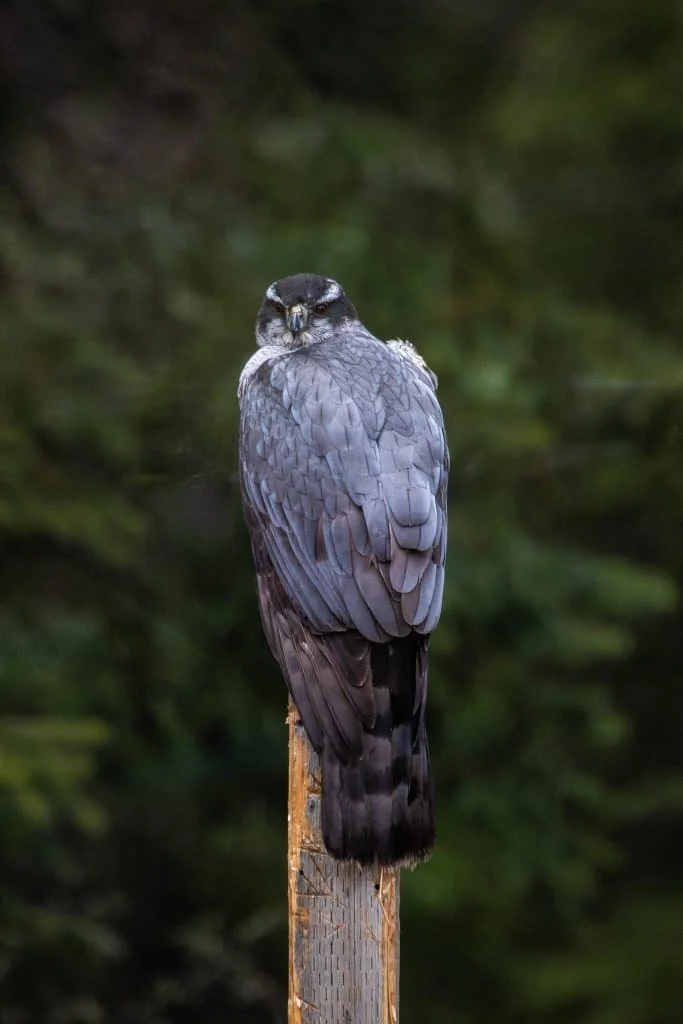
Peter Stronach, XC623479. Accessible at www.xeno-canto.org/623479.
Wingspan
89-127cm
Weight
631-1364g
Life Expectancy
7 Years
Diet
Mammals, reptiles & insects
Northern Goshawks are considered medium to large sized hawks.
The adult hawks are usually a pastel, light gray color, but the juveniles can be distinguished by their streaky patterned brown feathers.
These hawks have notably short wings and are readily recognized due to a bright white streak on their faces.
Northern Goshawks can be found year-round throughout the state of Nevada. However, these birds only reside in regions that have tree coverage.
It’s common for these hawks to nest in coniferous trees where a breeding pair may build up to eight nests during breeding season in the early spring.
Take note that this is a rather defensive species and you should observe them with great caution. You’ll have no problem identifying these hawks due to their alarming, repetitive ‘ki-ki-ki’ call.
4. Red-Shouldered Hawk
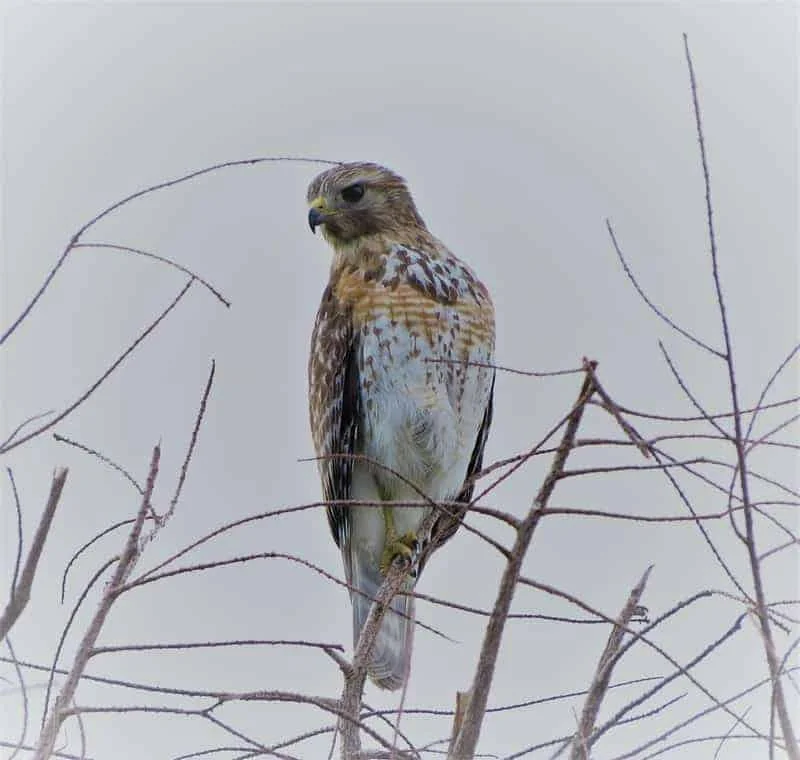
Christopher McPherson, XC602509. Accessible at www.xeno-canto.org/602509.
Wingspan
94-111cm
Weight
486g-774g
Life Expectancy
2 years
Diet
Small mammals, reptiles & amphibians
Red-shouldered Hawks are medium-large birds living up to their names by displaying brilliant red feathers on their chests.
Mature Red-shouldered Hawks have large wings and medium-sized tails with intricate black and white checker patterns along their wings.
They also display black and white patterned tails though these particular hawks can vary with regard to feather patterns.
You’ll most likely spot these hawks in the early spring and summer months in forests near rivers and streams.
Red-shouldered Hawks remain in the same breeding areas, reusing the same nesting sites for many years.
It’s common for these birds to nest in riverside forests or oak woodlands, and they’ve also been known to take habitat in eucalyptus groves.
Red-shouldered Hawks can actually be identified by sound before they are identified by sight. These vocal birds offer a constant, ‘kee-ah’ call that can be heard from great distances.
5. Broad-Winged Hawk
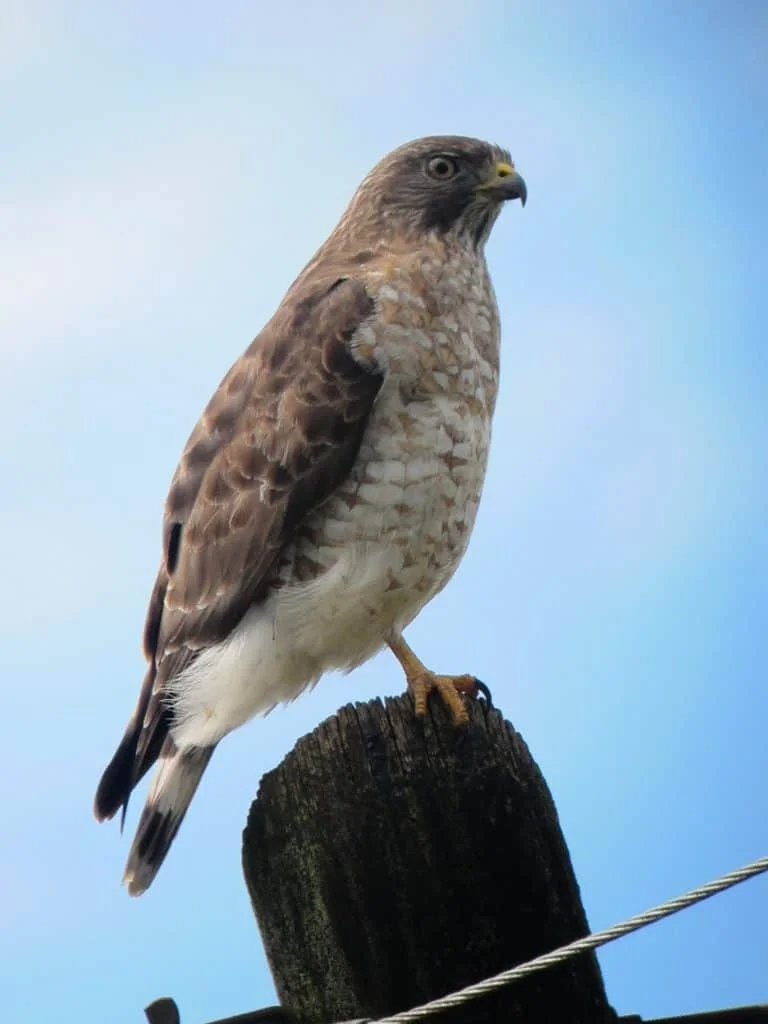
“Broad Winged Hawk” by ‘Felipe Uribe‘ is licensed under CC BY 2.0
Meena Haribal, XC479508. Accessible at www.xeno-canto.org/479508.
Wingspan
81-100cm
Weight
265g-560g
Life Expectancy
Up to 20 years
Diet
Small mammals & insects
Broad-winged Hawks are medium hawks with rich, reddish colored feathers above, and black and white patterned detailing on their tails.
Juvenile hawks, though, have light brown colored feathers.
Though Broad-winged Hawks are not as commonly observed as the other species of hawk, some migrating hawks have been seen in a small area in the northeastern region of Nevada.
During the autumn months you’ll most likely see the hawks along ridges. Some Broad-winged Hawks stay in Nevada year-round and take habitat in woodlands and forests in loose nests.
Otherwise, autumn migration is the optimal time to spot a large number of these hawks as they travel in great numbers to southern states.
You’re sure to recognize these birds by their high-pitched whistle ‘kee-eee’ call. It’s important to note that the males will have a higher pitched call than the females.
6. Swainson’s Hawk
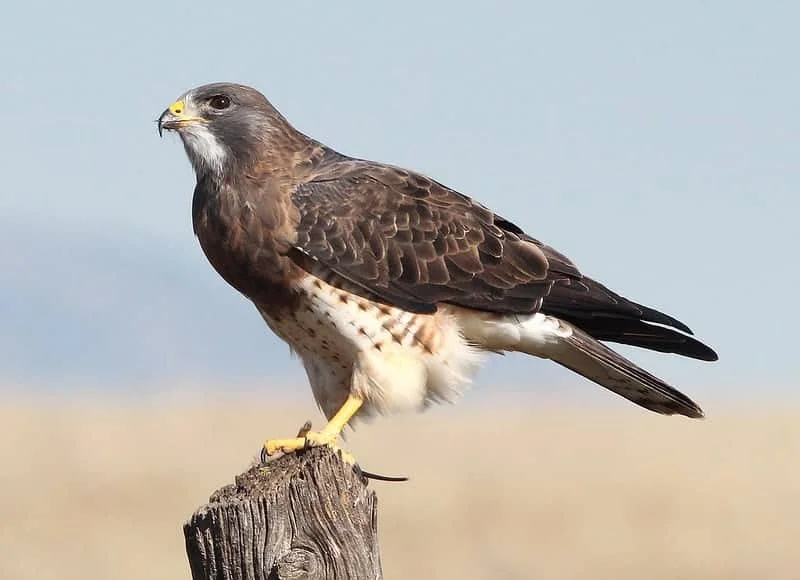
Bruce Lagerquist, XC468974. Accessible at www.xeno-canto.org/468974.
Wingspan
4 feet
Weight
693-1367g
Life Expectancy
16-19 years
Diet
Mammals & Insects
Swainson’s Hawks are large birds widely recognized by their broad and thin wings, but short tails.
These hawks can vary in color but many of them have dark feathers above, but have bright white underparts.
Swainson’s Hawks are quite popular in western prairies and agricultural areas.
They can popularly be seen throughout much of Nevada during their breeding season from around March to late autumn.
They can also be seen near open grasslands as they hunt for their prey, or among their nesting sites near trees.
Swainson’s Hawks are known to migrate with other birds and can be seen traveling in groups of thousands!
You can identify Swainson’s Hawks by their unmistakable high-pitched ‘kee-aah’ squawk.
7. Rough-Legged Hawk
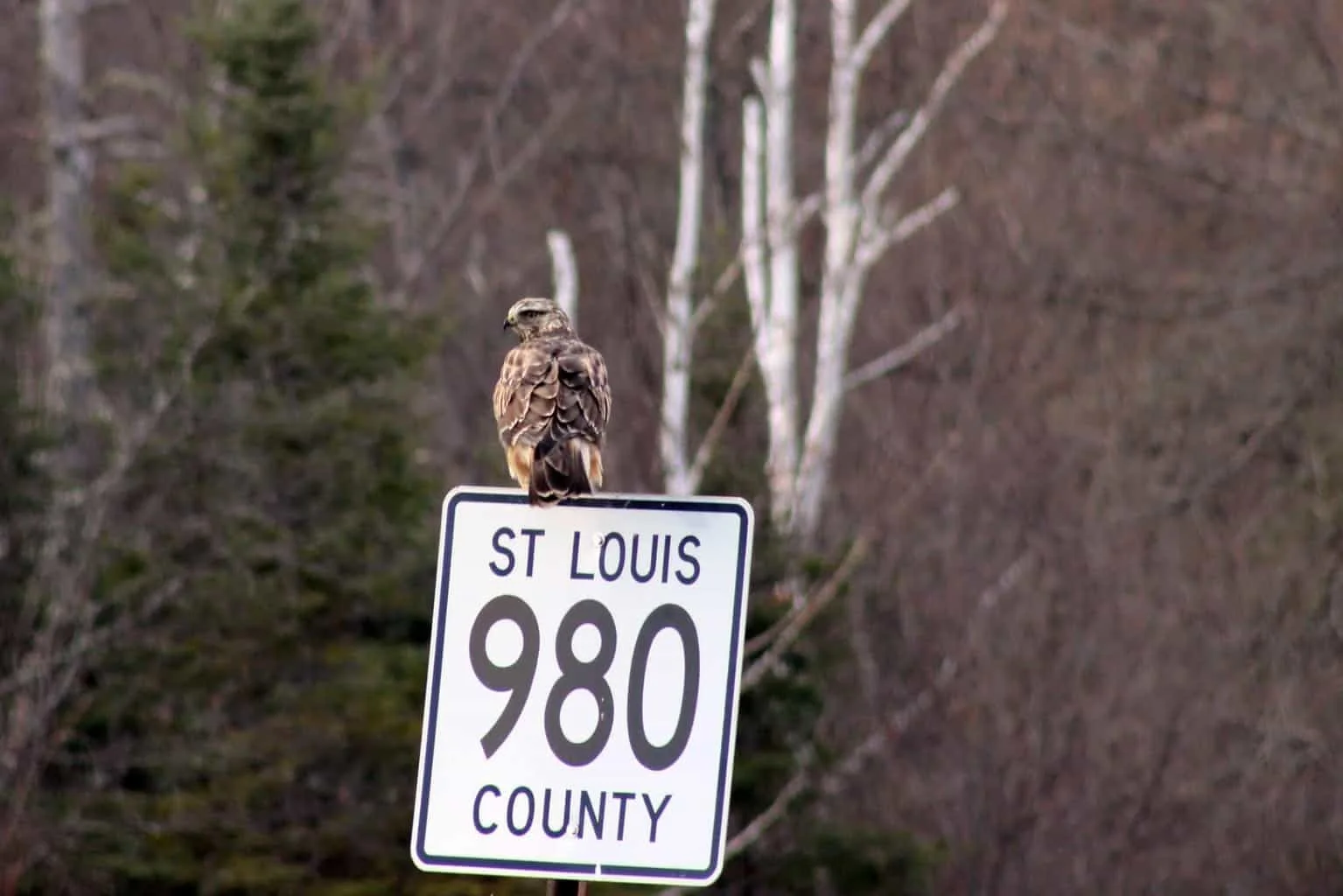
Stein Ø. Nilsen, XC580104. Accessible at www.xeno-canto.org/580104.
Wingspan
132-138cm
Weight
715-1400g
Life Expectancy
Up to 18 years
Diet
Small rodents
Rough-Legged Hawks are recognized as medium to large sized hawks, known for their large, but thinner wings.
Rough-Legged Hawks often vary in color with strikingly distinct feather patterns.
Usually, these hawks have dark brown, to black bodies with white markings on their tails. Rough-legged Hawks tend to breed far north but some travel south for the winter.
During the winter, they live in areas like grasslands, prairies, marshes, and farmlands. Their nesting sites are typically on narrow ledges or cliffs.
However, you have the best chance of observing these birds in open areas, and they have even been spotted around Louisiana airports.
Otherwise, Rough-Legged Hawks are known to circle in the air together and dive from high elevations.
You’ll easily recognize these hawks by their familiar, cat-like meow or a soft snakelike hissing sound.
8. Ferruginous hawk
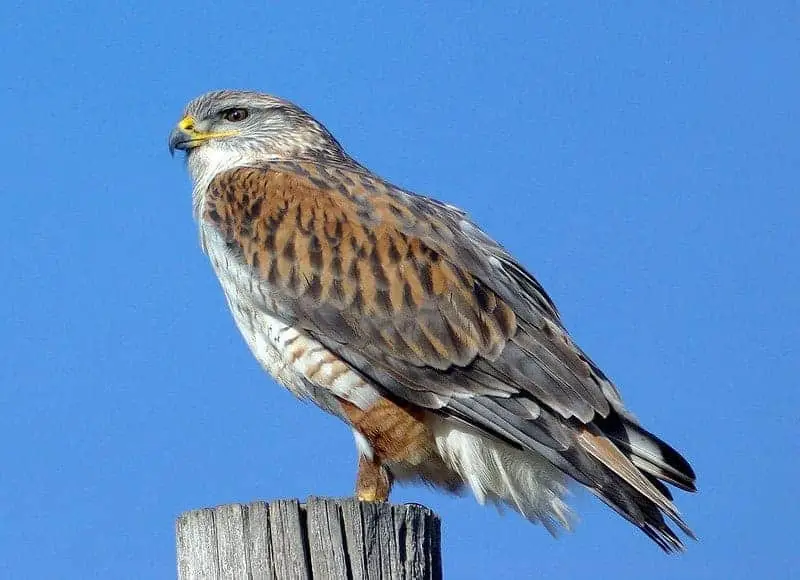
Paul Marvin, XC419204. Accessible at www.xeno-canto.org/419204.
Wingspan
133-142cm
Weight
977-2074g
Life Expectancy
16-20 years
Diet
Small mammals
Ferruginous Hawks are large birds that vary in colors ranging from light to dark.
Many of these hawks are known for being reddish brown with bluish gray flight feathers and pale underbellies.
Other hawks are a rich brown color with pale underparts and white underwings.
These hawks are widely known to take habitat in desert scrubland and open prairies, making Nevada a perfect home!
You’ll primarily notice these hawks during breeding season usually around the month of March where they can be found near prairie dog burrows stalking their prey.
Ferruginous Hawks are even known to nest on cliffs or on ground in bulky collections of sticks and debris.
The adult hawks of these species are easily recognizable due to their scratchy, hoarse-like call while the immature birds have high octave cries.
9. Northern Harrier
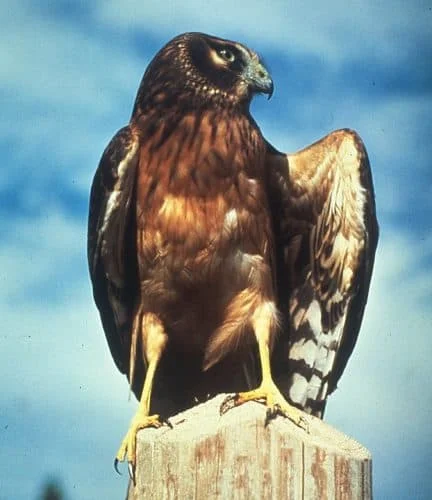
Bruce Lagerquist, XC329772. Accessible at www.xeno-canto.org/329772.
Wingspan
120cm
Weight
390g
Life Expectancy
16 years
Diet
Rodents and small birds
Northern Harriers are classified as medium-sized birds, though they have long, narrow wings and long tails.
These hawks are often compared to owls with regard to their facial features. Adult male Northern Harriers are known to be pale gray above, with dark feathers on their wings.
In contrast, the female and juvenile hawks usually have streaky brown feathers, and are pale colored below.
Northern Harriers can be found in Nevada year-round, particularly in the northern part of the state.
During the winter, however, you may see more of these hawks taking habitat in Southern Nevada.
You’ll most likely find these hawks in their preferred open fields and grasslands, where they nest on the ground in loose colonies.
Their breeding season typically begins in spring and has been known to last late into the autumn months.
Male Northern Harriers can be identified by their high-pitched ‘kek-kek’ sound when they are threatened by predators. Females are known for their piercing scream during breeding season to communicate with their male partners.
10. Zone-Tailed Hawk
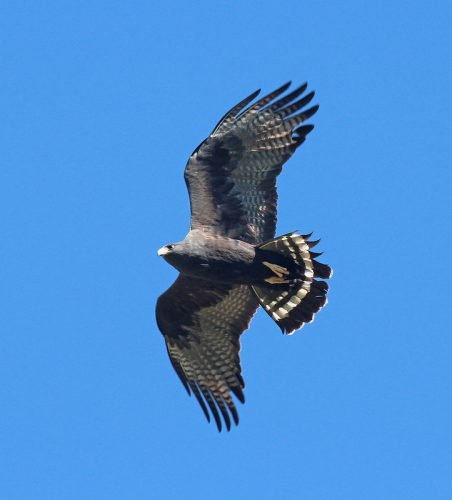
Richard E. Webster, XC604827. Accessible at www.xeno-canto.org/604827.
Wingspan
120cm
Weight
600-900g
Life Expectancy
4 years
Diet
Other birds, sometimes lizards
Zone-Tailed Hawks are medium birds with an overall black color, though they have silver bars adorning their flight feathers and white patterns on their tails.
Juvenile Zone-tailed Hawks can be distinguished by their gray and black colored tails. These hawks are occasionally spotted around the Las Vegas area.
They tend to take habitat in trees, mountains, deserts, and canyons. They typically construct their nests from trees and bark during breeding season in March and April, often reusing the same nesting sites.
Take note these hawks are defensive when it comes to their nesting sites! Zone-Tailed Hawks are recognized for their harsh, drawn-out ‘kreeaaaaar’ call.
11. Harris's Hawk
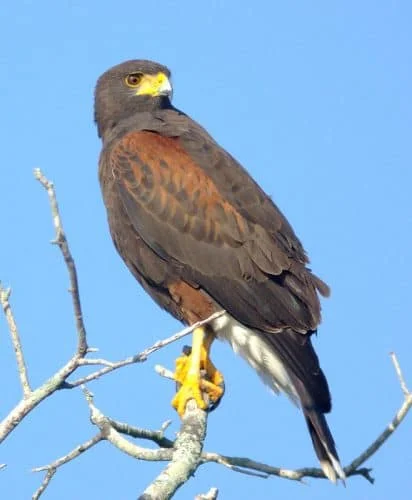
Ignacio Escobar, XC585065. Accessible at www.xeno-canto.org/585065.
Wingspan
110cm
Weight
700g
Life Expectancy
15 years
Diet
Small mammals, birds & rodents
Harris’s Hawks are medium to large in size, having dark brown feathers with rich, red colored shoulders.
Their tails are black with a large white band at the tip of the tail. Juvenile hawks of this species, however, can be recognized by the various white markings on their underparts.
Harris’s Hawks are not quite plentiful in Nevada, however they can be seen in areas with close proximity to the Arizona border.
These birds prefer to be near cacti, mountains, and cliffs. You can even observe them in tall trees, with their nests being made of a plethora of materials like sticks, scraps, and some man-made objects.
These birds are recognized for their 3-second angry sounding defensive call.
12. Common Black Hawk
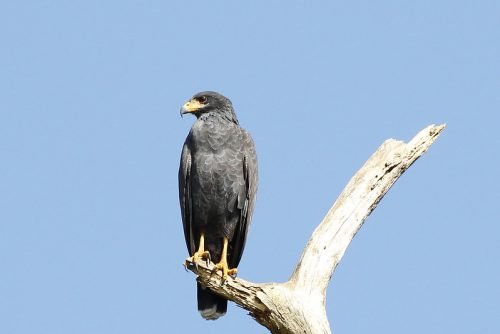
Richard E. Webster, XC579265. Accessible at www.xeno-canto.org/579265.
Wingspan
127cm
Weight
950g
Life Expectancy
13 Life Expectancy
Diet
Snakes, frogs and Fish
Common Black Hawks are recognized as medium sized birds and have short tails, but longer wings and legs.
As their name suggests, these hawks are black all over with only a white band detailing their tails. Immature hawks of this species, as usual, are more of a streaky brown color.
Common Black Hawks are found in southwest regions, usually restricted to the edges of streams with a lack of human disturbance.
They are known to build their nests at high altitude or in mangroves. These nests often grow in size over time due to the fact that these hawks reuse them so often.
You’re most likely to see them in the early spring months, though they may be relatively difficult to spot.
Interestingly, these hawks do not have very unique calls, however they have a loud alarm call if they feel threatened.

More Articles.
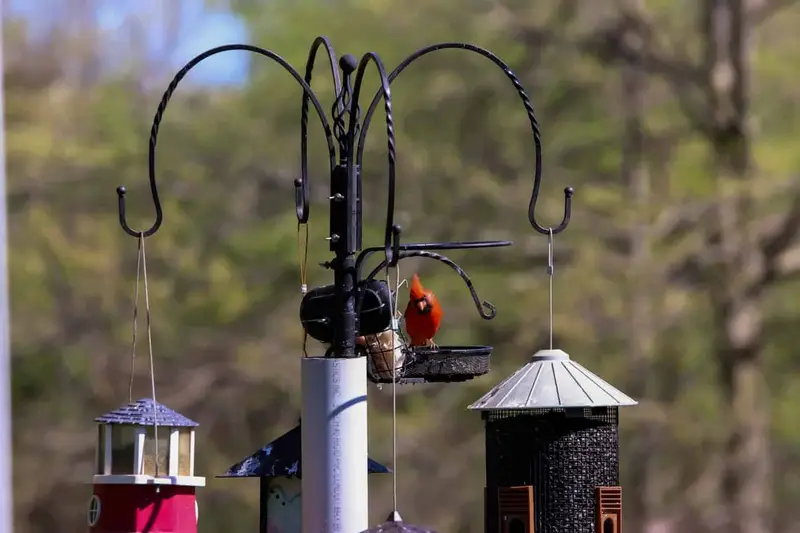
When you are looking to buy bird feeders, you will inevitably be met with recommendations
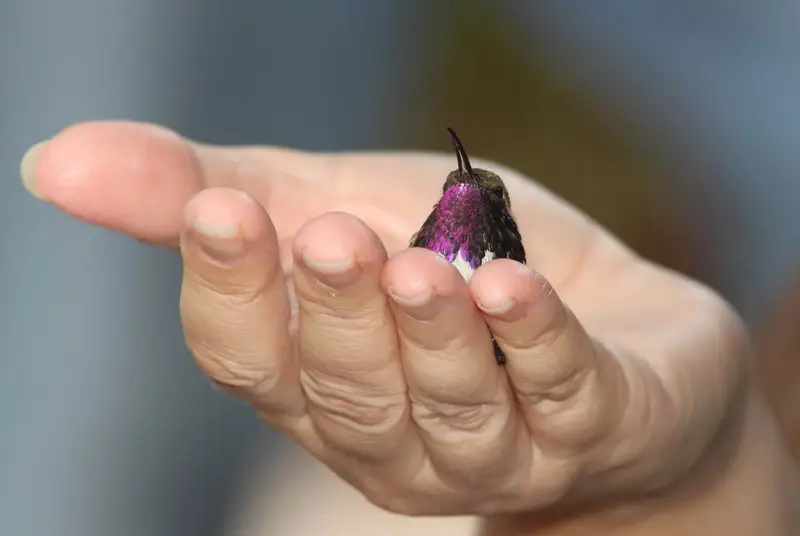
Can you keep a Hummingbird as a Pet in the US?
In the US, it is in fact illegal to keep hummingbirds as pets in your

If you’re thinking about taking your child birdwatching, the most important thing is having equipment

About Us
We are avid bird-watchers who recently retired, allowing us more time to travel the world. Fortunately, we have managed to visit numerous countries around Europe, Asia, and America. Watching and photographing birds has been a passion for many years and we are making the most of the extra time on our hands!
